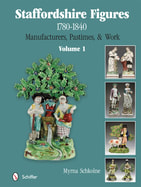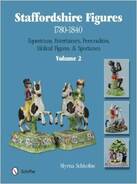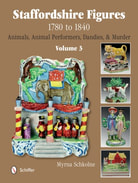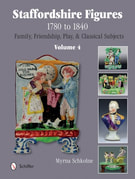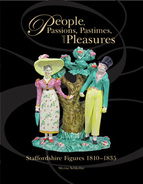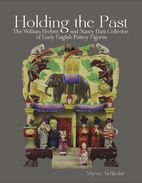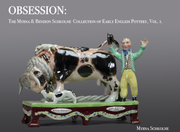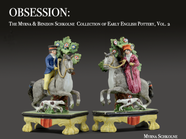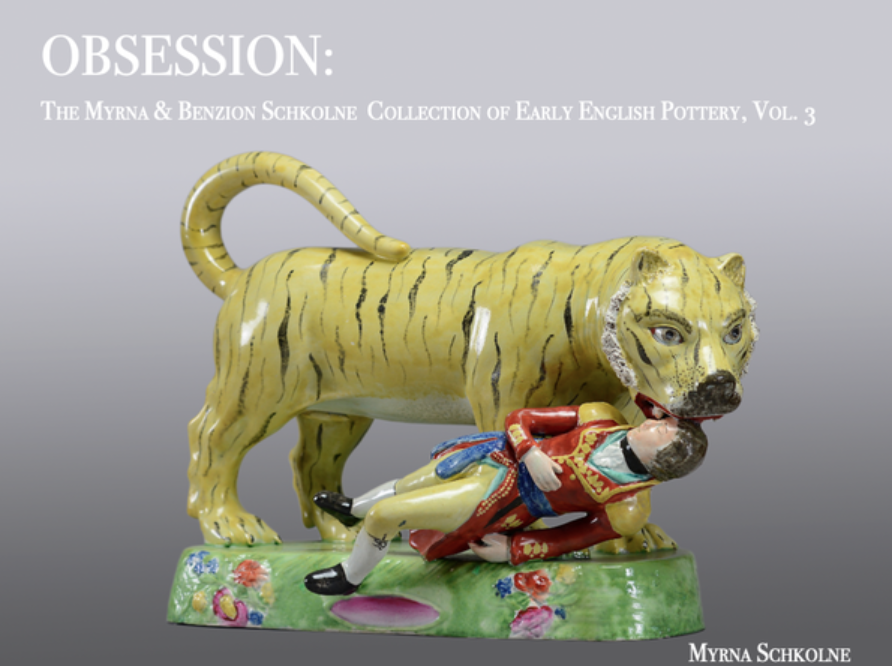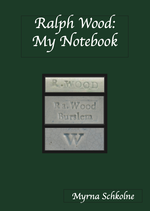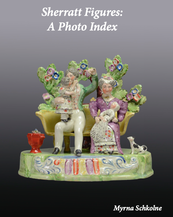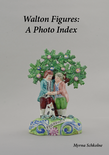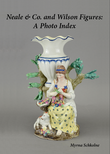Of course, we can take the pottery question further and contemplate restoration of many missing parts. The opportunities are endless because early 19th century figures have many vulnerable ‘bits.’ But I think you get the gist of my concern. Restoration is inevitable, but when does restoration destroy all value? When is a figure SO tarted up that it is no longer an early figure? When does it become an object of no merit? Where do you draw the line on restoration? And just where you draw that line will determine the caliber of your collection.
I know most figures have restoration, but I want full disclosure so we can all make informed decisions. Do you think this unreasonable?
I have been around enough to have seen plenty of atrocious things priced for perfection and foisted on the unsuspecting public. I have seen more than one figure with a beautiful bocage….except the bocage was not original to the figure. Instead, it had been ‘transplanted’ from one broken figure to another, so two halves made a whole. I have seen a restorer chop off a damaged bocage because it was easier to make a brand new replacement bocage rather than restore the broken pieces on the old bocage. And I have seen and heard of more over painting than you could imagine. Want that cow black rather than red so it pairs with a black cow you already own? No problem for a restorer. Repaint elements of two odd figures to make them appear a pair? No problem for a restorer. Don’t like the gritty, degraded enamels on a figure? No problem for a restorer. Anything at all missing on your figure? No problem for a restorer. Just about anything is no problem for a restorer! But the restorer is merely doing what the dealer wants. So we must question the motivation of the dealer in having this work done.
Nearly all dealers are charming, but who’s looking for a date? We want honest wares, and I am increasingly shocked by the lack of ‘transparency’ in the antiques pottery trade. Yes, figures get restored and I can show you all types of restoration in my collection--but I know about that restoration, and if you buy a restored figure I believe you should be told about it too. We have three types of dealers:
1. A few fabulous dealers who are both savvy and honest. They buy the best merchandise to start with, they disclose the often-inevitable restoration on the price ticket, AND they note it on the receipt.
2. Dealers who are not dishonest, but they are also not savvy enough to detect restoration. (If restorers can be so clever, how can some dealers be so frigging stupid?!)
3. Dealers who are quite savvy about the restoration on their figures….but they prefer keeping that info to themselves.
Of course, dealers in Group 1 pay the price. The novice collector judges our Group 1 dealer as much more expensive and shops elsewhere. Caveat emptor. Sometimes Group 2 and 3 wares are also priced for perfection!
Would you go to a doctor who could not assess your condition? So why buy pottery from a dealer who cannot assess condition? I believe every dealer should be able to detect restoration and repair. And every dealer should back his/her opinion with a written guarantee of authenticity. INSIST ON THIS. Don’t be intimidated.
I hope this helps you all build Beautiful Collections. Life is too short for anything less. There is a lot of cruddy pottery out there, and you must avoid it. So some practical tips to detect restoration yourself. This is quite easy at home, but a lot more difficult at antiques shows where the lighting is poor.
- For a start, I always compare the figure to a picture of a perfect example (stored in my brain, in my photo archive, or in a book) to assess for any changes in form that suggest damage or restoration.
- At home, I use a pair of 4x reading glasses (at the suggestion of John Howard) to scour the surface for tell-tale signs of change in texture, glazing, color. When I am out and about, I carry a little magnifier. Clipped to the its ring is a tiny, strong flashlight—suggested by Andrew Dando.
- I use my fingers to detect any change in ‘feel’. Restored bocage leaf tip edges usually are deliberately smooth, whereas originals have a roughness. A restored surface is often slightly sticky to the touch. If you drag a pin across the figure, it will move freely…until it hits restoration, when it will drag just a little.
- If all else fails, paint stripper will do the trick. Of course, if you apply it and the paint dissolves, you know you have hit restoration and that you will need to have the work redone.

